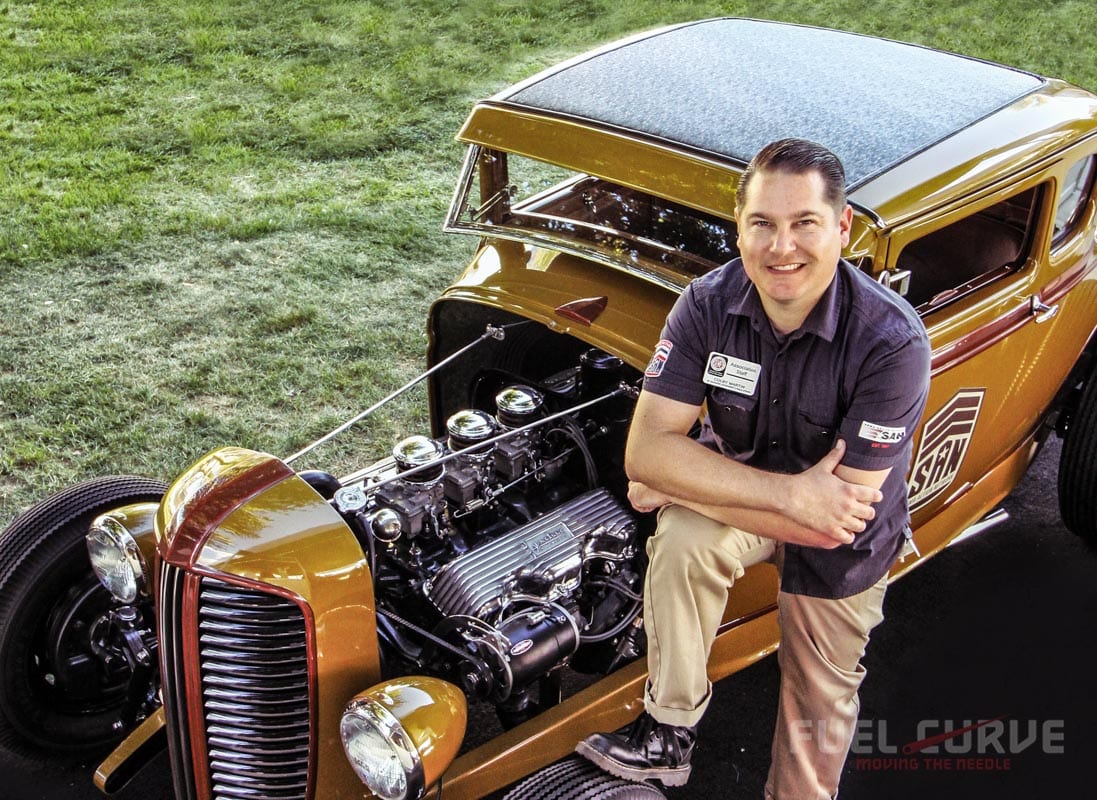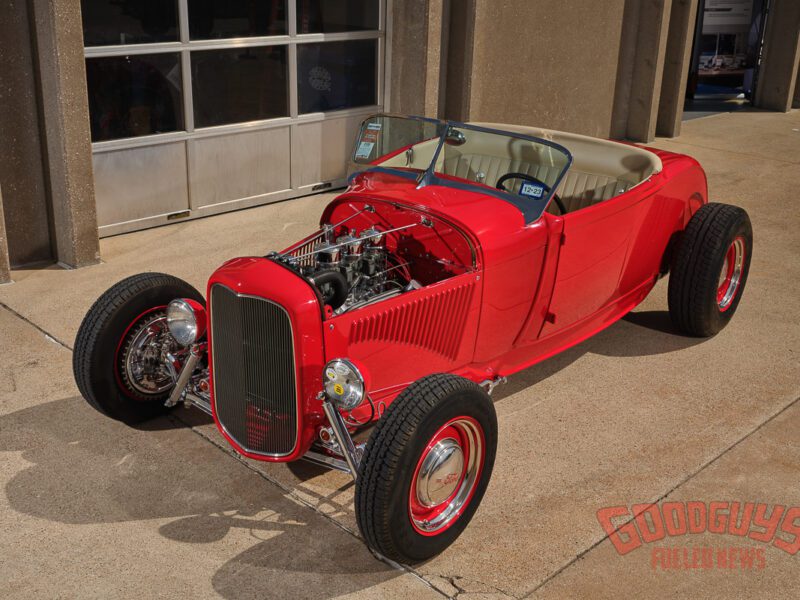Ignited We Stand – Colby Martin and his 1931 Model A Coupe
Colby Martin, owner and builder of this hopped up 1931 Model A Coupe first blipped on the hot rod radar in 2001 when he co-produced a student art exhibit at Cal State Fullerton’s Exit Gallery titled, “Wreckage from a Rebellious Past: A Celebration of Grime in America.” The gallery was decorated to look like an old garage interior and was rat-packed with all the things we love from days past: car parts, music and original photography and artwork from Martin and buddy Michael Berman.

“Dad was always my inspiration,” said Martin. “Al is a true car guy. In fact, he’d sit at the kitchen table doodling his dream cars that I would color in with my Crayolas.”

The exhibit got the attention of a number of people who saw potential in the 19-year-old. For years the industry has been searching for the poster child, the kid who will carry the torch and here he was baring his Ticonderoga baton. He found employment at the famed SO-CAL Speed Shop. It was while working for SO-CAL that he stumbled across the makings of this hot rod: a 4-inch chopped 1931 Model A Coupe body found at the Kennedy Brothers’ Bomb Factory. He’d already acquired a vintage Ford dropped I-beam for sixty bucks and a ’58 Chevy Impala 348ci W-motor salvaged from a ski-boat donated by Steve Lenain. And, of course, a SO-CAL Step-Boxed ’32 frame wasn’t far behind.

A small pile of parts does not a hot rod make without a lot of blood, sweat and tears. Nevertheless, like any good father-and-son team, Al and Colby tackled it all from reforming the ’37 Dodge truck grille to replacing the lower six inches of the entire body. Al will tell you, “It was a learning experience.”
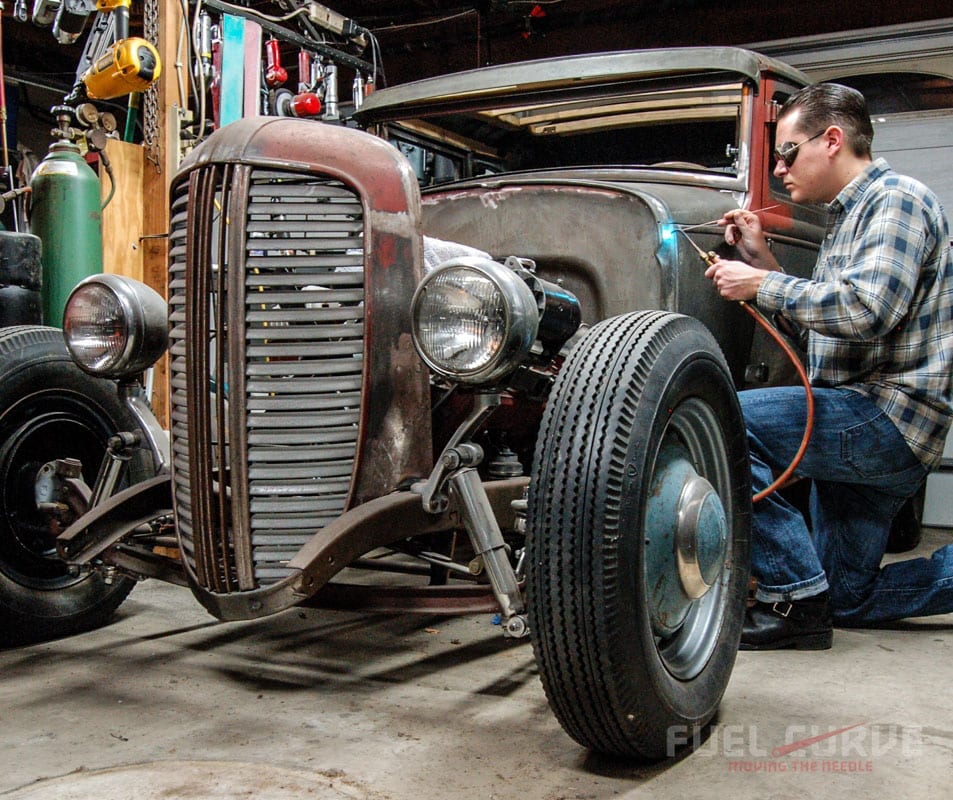
Colby, meanwhile, sought a scholarship from the industry trade association SEMA. He was offered a full-time position and joined the organization in 2004. In 2011, as the Coupe was nearing completion, Colby was given the opportunity to head up the SEMA Action Network (SAN). According to Colby, “The SAN is SEMA’s grassroots advocacy force and represents the legislative voice of the auto hobby. This growing alliance is comprised of U.S. and Canadian industry members and enthusiasts fighting unfair automotive laws and regulations. Founded in 1997, the SAN shapes the course of vehicle-related proposals before they become law by providing the tools to influence bills in one’s state. The notion of ‘gearheads’ like me uniting to protect the hobby we love has had a pure appeal since my earliest days with SEMA.” Appropriately, Colby coined the SAN’s “Ignited we stand!” tag line and campaign branding.

Thirteen years in the making, Colby’s 1931 Model A Coupe finally debuted to great acclaim in the SAN display at a recent SEMA Show. It made a fitting centerpiece as it embodied so much of what the performance aftermarket is all about and the problems it faces on a daily basis. “Working with the SAN on a daily basis has redefined my understanding of our shared hobby,” commented Colby at the time. “This year has seen another roster of legislative victories.
Several of these victories were the result of hard-fought battles. In Nevada, for example, legislation was introduced that would have negatively altered the requirements for vehicles eligible for registration as classic vehicles, old timers, street rods and classic rods. The bill was ultimately vetoed by the governor as a result of our persistent opposition and with the assistance of our allies in the legislature. After speaking with SAN members in Las Vegas during the SEMA Show, I was reminded just how personal these legislative proposals can be to local communities. After spending so much time, effort and money on my own hot rod, it is easy to sympathize with the threat of greater restrictions.”

Sometimes life gets in the way of hot rods. During this baker’s dozen years in the making Al and Colby journeyed to El Mirage and Bonneville many times to crew for the Thacker and Shine land speed race team. In fact, the “Save The Salt” campaign is supported by SEMA. Colby modeled for artist Tom Fritz and found time to marry his lovely wife Katie while Al retired from thirty years as a Deputy Sheriff. All that time they whittled away on the A when they could. They installed a ’39 Ford Deluxe coupe dash donated by Leonard Knight, a Muncie M21 four-speed transmission donated by Dennis Durnell and Jack Kennedy, and a Currie 9-inch rearend. They swapped out the 4bbl for triple Rochesters and used a GM Duntov cam ground for the Tri-power version of the engine.
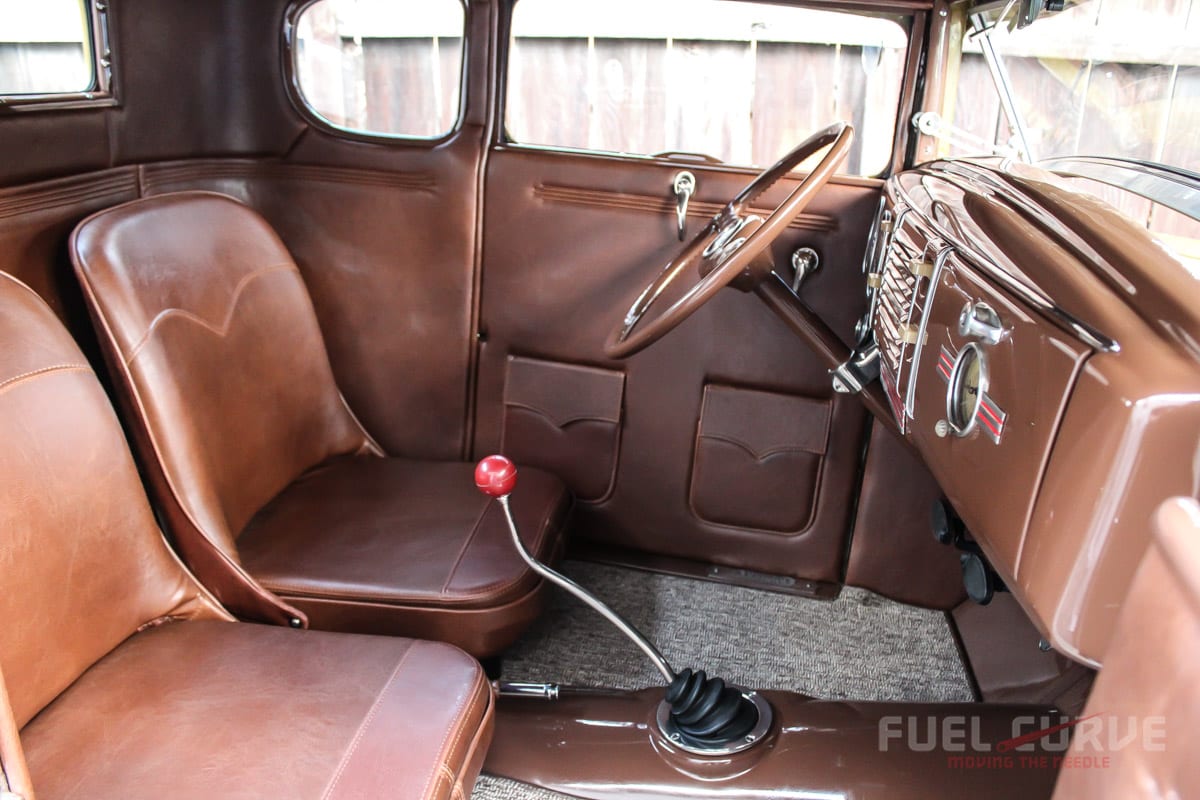
As you can tell, like any good hot rod, many of the parts were found or scrounged. “The boat fuel tank came from Goodwill,” said Colby. “We decided on Nash Metropolitan taillights but N.O.S. pieces were impossible to find. The repops are made of plastic. So we bought a set of the reproductions, took the housings to a foundry, and had them cast in brass and then nickel-plated. They’re reproductions of reproductions. A sign of the times, I suppose.”
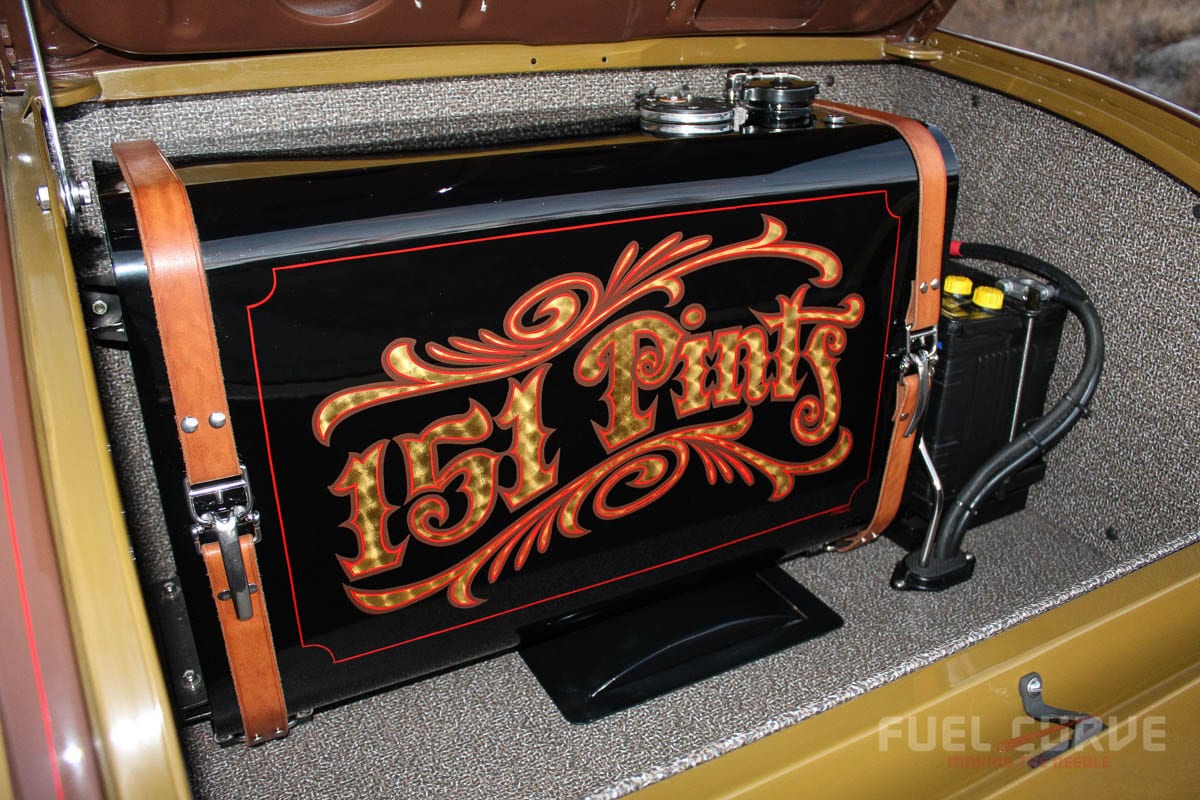

Finally, it came time for paint—always a tricky decision. Colby was inspired by depression-era Harley-Davidson paint jobs saying, “I always knew that if I ever got a motorcycle I would want a real murky, greenish, golden, khaki color accented with brown and red. I’d seen bikes like that at Corky Coker’s museum and they inspired me. Dad and I had already mulled over about 100 different ideas for a factory-inspired, two-tone look. Finally, we went to Lowe’s and from all the paint samples selected the ugliest green with chocolate brown accents. Then it went to Art Eggleston who matched the paint and applied it before going to Larry Fator who laid down the pin stripes and gold leaf. The result is even nicer than I’d always pictured it.”

Thirteen years may seem like a long build, but in reality, it’s not. It takes what it takes and the car is testament to Al and Colby’s ingenuity and tenacity to get ’er done in a world where the ability to express oneself, one’s individuality through the art of the automobile seems to get more difficult every year.
Despite the continued efforts of SAN, the industry, hobby, sport, call it what you will is under constant threat and never more so than now with the advent of new technology, computers, autonomous driving and so many other forces that directly and indirectly affect our ability to have fun with cars.

As Colby says, “Based on the current economic and legislative environment, the road ahead will continue to be challenging. It is clear that our hobby needs the SAN now more than ever. Please enlist, stay informed and become part of the solution. After all, great strength comes with great numbers.”
You can actuively can play a part in safeguarding our hot rod hobby. Bang it here to make a difference www.semasan.com

